- NEED HELP? CALL US NOW
- +919995411505
- [email protected]
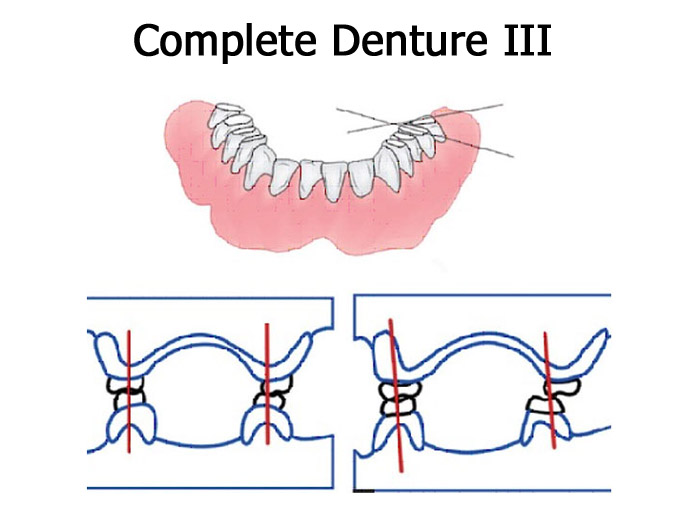
An articulator represents the TMJ and jaw members to which maxillary and mandibular casts may be attached to stimulate jaw movements.
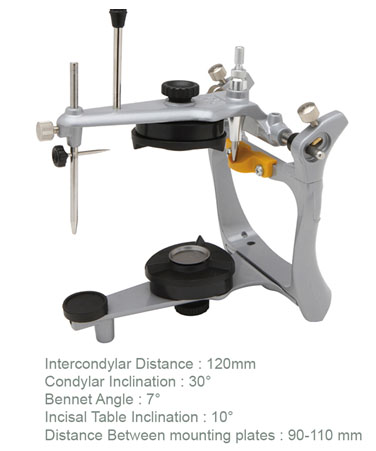
Class I |
Simple holding instrument capable of accepting a simple static registration |
Slab articulator |
Class II |
Instrument that permits horizontal as well as vertical motion but do not orient the motion of TMJ via face bow transfer |
|
IIA |
Eccentric motion permitted is based on average or arbitary values |
Mean vale articulator |
IIB |
Limited eccentric motion is possible based on theories of arbitary motion |
Monsons articulator |
IIC |
Limited eccentric motion is possible based on engraving records obtained from the patient |
House articulator |
Class III |
Permit horizontal , vertical positions and also accept face bow transfer and protrusive |
|
IIIA |
Accept a static protrusive registration and they use equivalents for other types of motion |
Hanau mate |
IIIB |
They accept static lateral registration also in addition to protrusive as well as face bow transfer. They use equivalents for other types of motion |
Ney |
Class IV |
They accept 3D dynamic registrations and utilize a face bow transfer |
|
IVA |
The condylar path registerd cannot be modified |
TMJ articulator |
IVB |
They allow customization of the condylar path |
Stuart instrument |
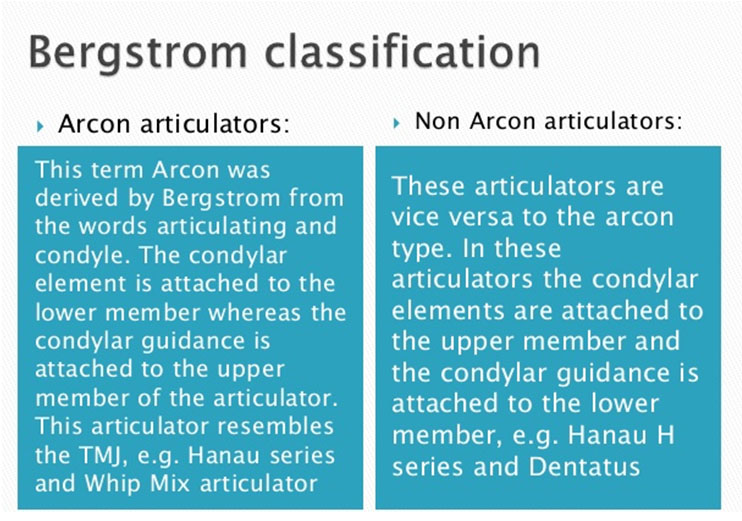
- Position of the arch
- Contour of the arch
- Orientation of the plane
- Inclination of occlusion
- Positioning for esthetics
COMPLETE DENTURE OCCLUSION CAN BE OF THREE TYPES:
- Balanced occlusion
- Monoplane occlusion
- Lingualised occlusion
The most important type of occlusion employed in complete dentures is Balanced occlusion.
A three point contact, usually one anterior and two posterior at centric relation is not sufficient for balanced occlusion. Instead there should be simultaneous contact of all the teeth. Balanced occlusion is absent in natural dentition. For minimal occlusal balance, there should be at least three points of contact on the occlusal plane. More the number of contacts, better the balance.
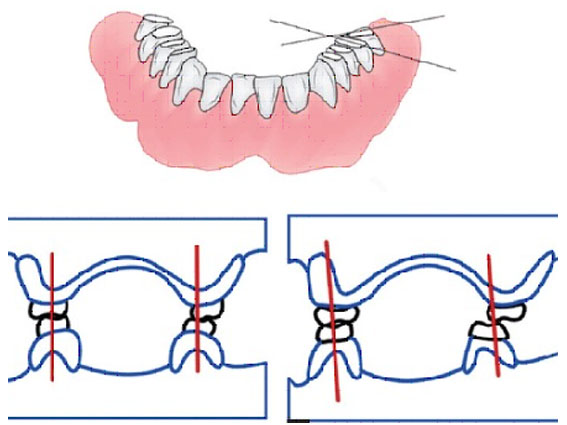
Concepts proposed to attain Balanced occlusion
1. Gysi's concept: 1914, he suggested arranging 33° anatomic teeth could be used under various movements of articulator to enhance stability of denture
2. French's concept: 1954, he proposed lowering the lower occlusal plane to increase the stability of the dentures along with balanced occlusion. He arranged upper 1st premolar with 5° inclination, upper second premolars with 10° inclination and upper molars with 15° inclination
3.Sear's concept: He proposed balanced occlusion for non-anatomical teeth using posterior balancing ramps or an occlusal plane which curves anteroposterioraly and laterally.
4 pleasure's concept : Pleasure indroduced a pleasure curve or the posterior reverse lateral curve
5 Frush 's concept : He advised arrainging teeth in a one- dimemsional contact relation ship , which sholud be reshaped during try -in to obtain balanced occlusion
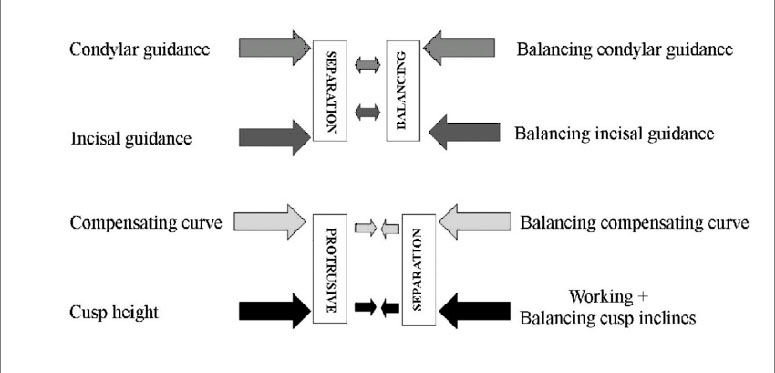
6 Hanaus's quint : Rudolph L. Hanu proposed nine factors that govern the articulation of artificial teeth . They are
These 9 factors are called the laws of balanced articulation. Hanau later condensed these nine factors and formulated five■ Horizontal condylar inclination
■ protrusive incisal guidance
■ Relative cusp height
■ compensating curve
■ plane of orientation
■ Buccolingual inclination of tooth axis
■ Sagittal condylar pathway
■ Sagittal incisal guidance
■ Tooth alignment

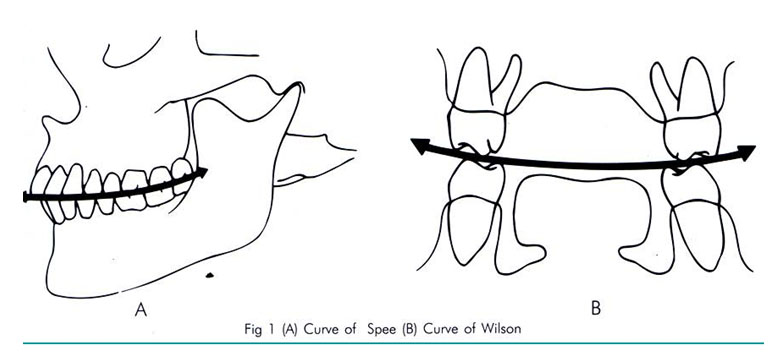
7. Trapozzano's concept of occlusion: He reviewed and simplified Hanau's quint and proposed his triad of occlusion (first three)
II MONOPLANE OR NON BALANCED OCCLUSION:
It is an arrangement of teeth with form or purpose. It includes the following concepts of occlusion:- Spherical theory
- Organic occlusion
- Occlusal balancing ramps for protrusive balance
- Transographics




